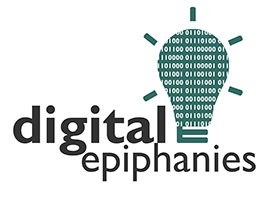Home » (Page 2)
Archives
Digital Epiphanies

The advances in technology in recent years have had many positive effects on the ways in which people can combine work and personal life. For example, being able to access email via a smartphone means that many can work from home, or work a flexible work pattern that successfully fits around caring responsibilities. However, the resulting “always-online” culture in which people expect almost instant responses to email messages, brings stresses and strains to those who feel under pressure to respond immediately and be available on a 24/7 basis.
Despite widespread and proliferating debates about the impacts of digital technologies on work-life balance, few empirical studies have explored how these technologies are being used and what impact their use is having on people’s work and personal lives. This project seeks to enhance our understanding of the paradoxical and double-edged effects that new technologies and digital practices are having on work-life balance.
CHI+MED
CHI+MED was a flagship project funded by the Engineering and Physical Sciences Research Council (EPSRC). The project ran for 6 years from late 2009 with initial funding of £5.7 million (EP/G059063/1).

The aim of the CHI+MED project was to transform the way in which interactive (programmable) medical devices are designed, bought and used, in ways that both prevent and reduce the consequences of medical errors. Our goal was to make the use of medical equipment safer, whether in hospitals or at home, and in so doing, to help to make the work of nurses, doctors, managers and device manufacturers save lives.
Some incidents involve errors with interactive medical devices such as infusion pumps that give drugs for treatment and pain relief, glucometers that measure blood sugar levels for people with diabetes, and vital signs monitors. In one study of medications through an intravenous (IV) pump, two thirds of the medications included at least one error.
These devices are intended to be used by people without extensive training. We are relying on them more and more, both in hospitals and by patients or their carers at home. It is vital that they are both reliable and easy to use.
If nurses, doctors or patients themselves misread the devices or make mistakes when setting up doses then this can, and unfortunately does, result in incorrect treatment, and can even kill.
We are focusing on the science and engineering of interactive devices to understand and solve these problems.

